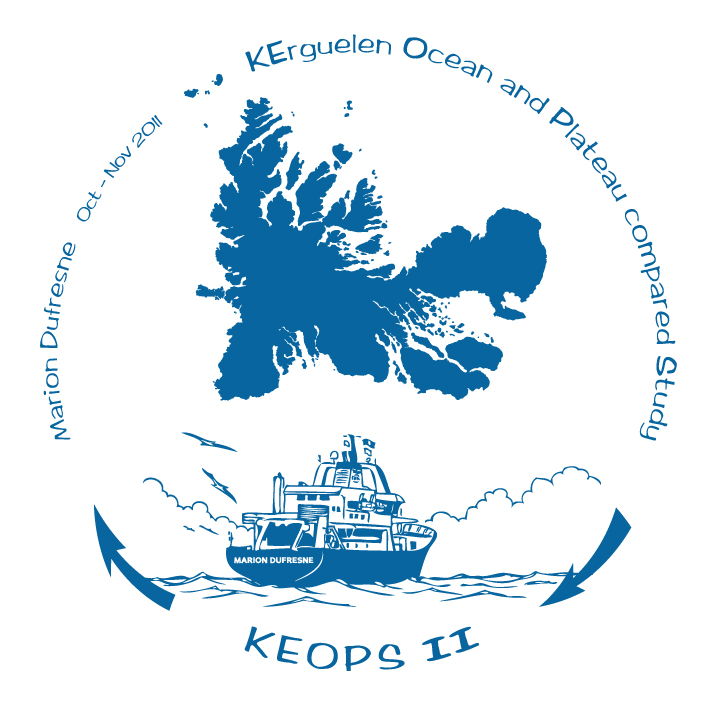KEOPS2, French GEOTRACES Process Study Cruise sails near Kerguelen Plateau in the Southern Ocean
 Marion-Dufesne left La Reunion Island on Sunday October 9, 2011 at noon. Goal: te KEOPS2 process study cruise (8 October – 30 November 2011, PI: Stéphane Blain), which aims at understanding processes related to the natural fertilisation of the waters located on and in the wake of the Kerguelen plateau.
Marion-Dufesne left La Reunion Island on Sunday October 9, 2011 at noon. Goal: te KEOPS2 process study cruise (8 October – 30 November 2011, PI: Stéphane Blain), which aims at understanding processes related to the natural fertilisation of the waters located on and in the wake of the Kerguelen plateau.
One of the first natural iron fertilization experiments (KEOPS, January to February 2005) has provided key findings on how the ecosystem functioning and the biogeochemical cycling of elements are affected by natural iron fertilization, but the observations made during KEOPS have also given rise to new puzzling questions that are focus of this new project. Among them:
-What is the source of the missing bioavailable iron? Indeed, in the framework of the first KEOPS cruise, the supply of dissolved iron to the surface layer was represented by a simplified vertical one-dimensional model. It was clear that this model did not hold for other geochemical tracers (e.g: most of the GEOTRACES isotopes) or particulate iron. To apply the results of KEOPS to other regions, the role of horizontal advection of dissolved and particulate iron for natural iron fertilizations should be properly assessed.
-Why are nitrate and phosphate concentrations high at the end of the season? At the end of the KEOPS cruise (13 Feb 2005), that corresponded to the end of the bloom, nitrate and phosphate concentrations in the surface mixed layer were 22 μM and 1.6 μM, respectively, contrasting with the depleted silicic acid concentrations (< 2 μM). What are the reasons that precluded complete utilisation of nitrate and phosphate? What is the role of light, silicic acid and/or iron limitation in the control of the magnitude and duration of the bloom? What is the role of nutrient regeneration and nitrification processes in the surface layer?
-How can we better constrain the dynamics of the mixed layer and its implication for biogeochemical processes in the Southern Ocean? The depth of the mixed layer and its variability (from the seasonal to the interanual scale) are critical issues that play an important role in the control of biogeochemical processes in the Southern Ocean, for example light availability for photosynthetic organisms, re-supply of nutrients via the deepening of the mixed layer depth, winter stocks of nutrients available for the growth season.
– What is the major pathway of carbon export resulting from the natural fertilization: fecal pellets or sinking diatoms?
– What is the fate of the carbon exported to the deep water?
You can follow the KEOPS2 project at:
http://www.climatefutures.mq.edu.au/keops2-mission/index.html
http://www.institut-polaire.fr/ipev/actualites/tout_public/des_nouvelles_du_terrain/keops_ii (In French)
